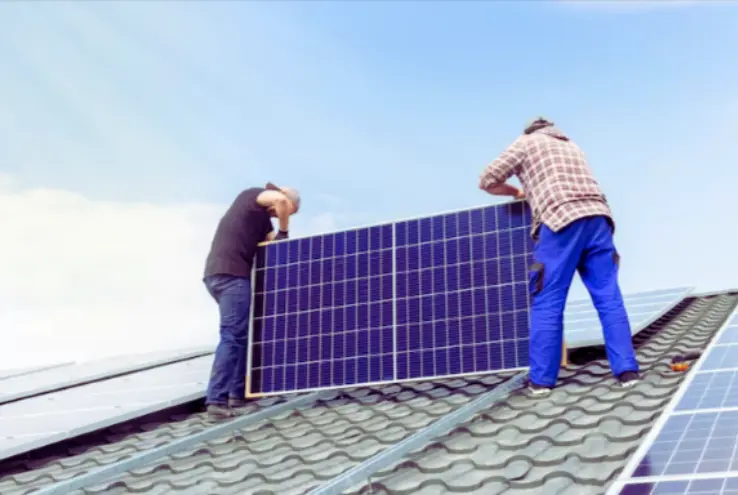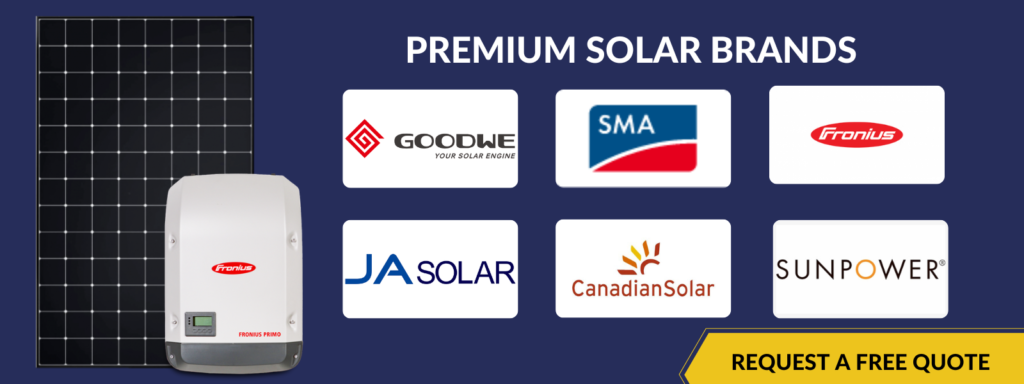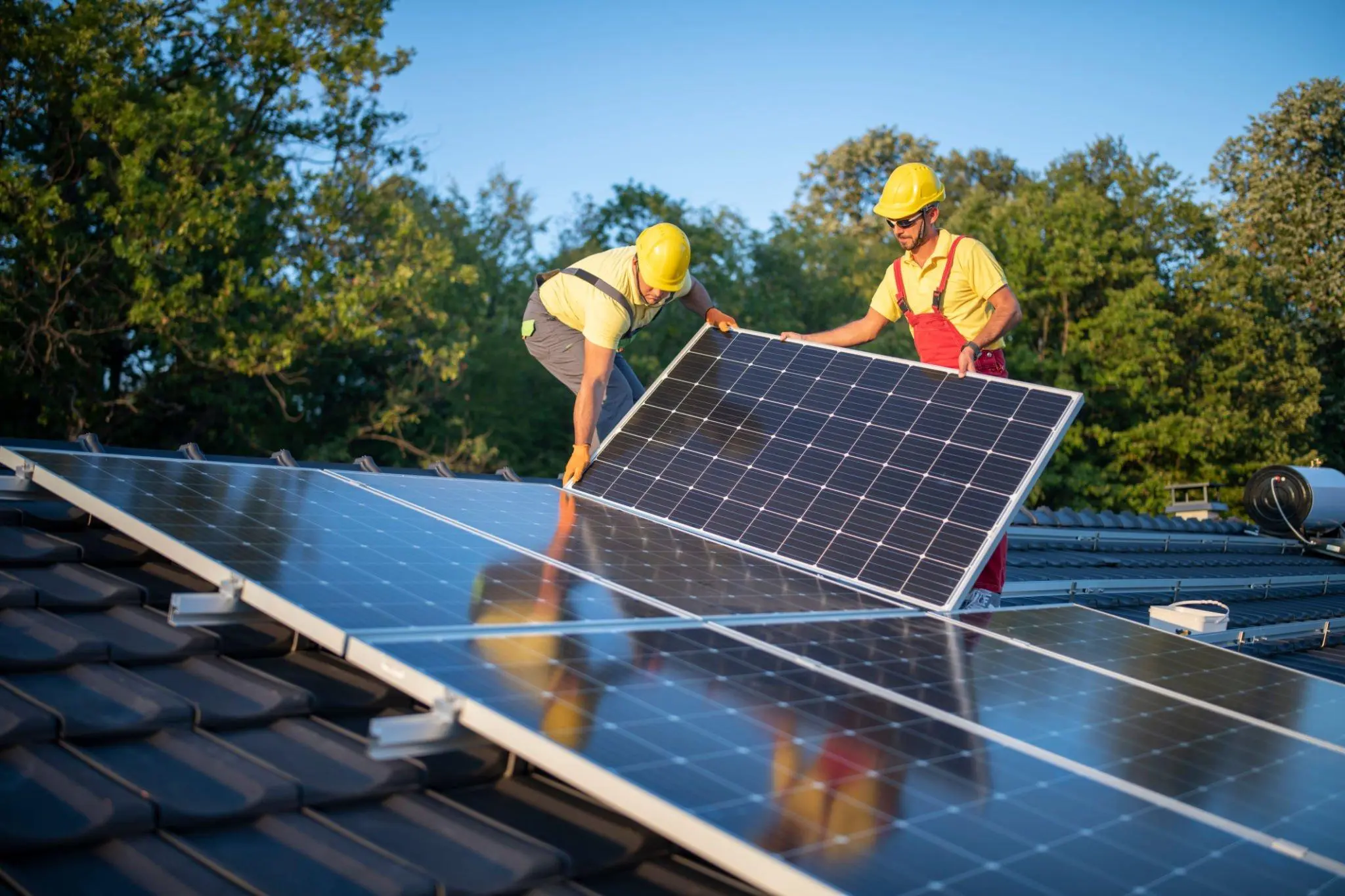Sydney’s sunny climate makes it an ideal location for harnessing solar energy. With abundant sunshine throughout the year, Sydney provides optimal conditions for solar power generation. This renewable energy source not only offers significant cost savings for residents and businesses by reducing electricity bills but also plays a crucial role in minimizing environmental impact. Solar energy reduces reliance on fossil fuels, lowering greenhouse gas emissions and promoting a sustainable future. Embracing solar power in Sydney is a smart, eco-friendly choice that supports both financial savings and environmental responsibility, making it a key player in the transition to renewable energy.
Why Go Solar in Sydney?
Cost Savings
- Reduction in electricity bills: Solar panels generate free electricity from the sun, significantly lowering monthly electricity expenses.
- Long-term financial benefits: Investment in solar energy leads to substantial savings over time, with reduced energy costs and potential incentives or rebates.
Environmental Impact
- Reduction in greenhouse gas emissions: Solar power is a clean, renewable energy source that helps decrease the carbon footprint, combating climate change.
- Contribution to sustainable living: Using solar energy supports eco-friendly practices and promotes a healthier environment for future generations.
Increased Property Value
- Higher market value for homes with solar installations: Properties equipped with solar panels often have higher resale values, attracting environmentally conscious buyers.
Energy Independence
- Reduced dependence on the grid: Solar energy systems allow homeowners to produce their own power, reducing reliance on external electricity sources.
- Resilience to power outages: Solar installations with battery storage provide backup power during outages, ensuring continuous energy supply.

Understanding Solar Panel Systems
Components of a Solar Panel System
- Solar Panels: Comprised of photovoltaic cells, solar panels capture sunlight and convert it into direct current (DC) electricity.
- Inverter: The inverter converts the DC electricity produced by the panels into alternating current (AC), which is the standard for household appliances.
- Mounting System: This system securely attaches the solar panels to the roof or another structure, ensuring they are properly positioned to maximize sunlight exposure.
- Monitoring System: A monitoring system tracks the performance and energy production of the solar panels, allowing users to optimize efficiency and identify issues.
Types of Solar Panels
- Monocrystalline Panels:
- Pros: High efficiency, longer lifespan, and better performance in low-light conditions.
2. Cons: Higher cost compared to other types.
- Polycrystalline Panels:
- Pros: Lower cost, simpler manufacturing process.
2. Cons: Lower efficiency and less aesthetically pleasing due to their blue hue.
- Thin-Film Panels:
- Pros: Lightweight, flexible, and versatile in application.Cons: Generally lower efficiency and may require more space for the same energy output as crystalline panels.

Choosing the Right Solar Panels
Efficiency
- Importance of panel efficiency: Higher efficiency panels convert more sunlight into electricity, providing more power output for a given surface area. This is crucial in areas with limited roof space or where maximum energy generation is desired.
- How to evaluate efficiency ratings: Efficiency ratings are typically listed as a percentage, reflecting the panel’s ability to convert sunlight into usable electricity. Compare the efficiency ratings of different panels to determine which offers the best performance.
Durability
- Longevity and warranty considerations: Solar panels are a long-term investment, so it’s important to choose panels with a proven track record of durability. Look for panels with warranties that cover performance and product defects for at least 25 years, ensuring reliable operation over time.
Cost
- Balancing upfront costs with long-term savings: While high-efficiency panels may have higher initial costs, they often provide greater long-term savings through increased energy production and reduced electricity bills. Consider the total cost of ownership, including installation and maintenance, when evaluating panel options.
- Comparing different brands and models: Research and compare various brands and models to find the best balance of efficiency, durability, and cost. Read reviews, consult with solar energy experts, and analyze performance data to make an informed decision.
Installation Process
Site Assessment
Evaluating roof condition, orientation, and shading: The first step is to assess the roof’s structural integrity, orientation, and any potential shading issues. This ensures the solar panels will be installed in the most effective location for maximum sunlight exposure and energy production.
System Design
Customizing the system based on energy needs: A tailored solar system is designed based on the household’s or business’s specific energy consumption patterns. This involves selecting the appropriate number and type of panels, inverter, and other components to meet the energy requirements.
Permitting
Required permits and approvals from local authorities: Before installation, it’s necessary to obtain the required permits and approvals from local government and utility companies. This step ensures the solar installation complies with all relevant regulations and standards.

Installation
Step-by-step overview of the installation process:
- Mounting System Installation: The mounting system is securely fixed to the roof.
- Panel Placement: Solar panels are carefully positioned and attached to the mounting system.
- Electrical Wiring: Wiring is installed to connect the panels to the inverter and the household electrical system.
- Inverter and Battery Installation: The inverter, and battery if included, are installed and connected to the panels and the household electrical system.
- System Connection: The system is connected to the home’s electrical panel and the utility grid.
Inspection and Activation
- Post-installation inspection and system activation: After installation, a thorough inspection is conducted to ensure the system meets all safety and performance standards. Once approved, the system is activated and begins generating electricity, providing power to the home and potentially feeding excess energy back into the grid.
Costs and Incentives
Average Cost of Solar Panel Installation in Sydney
Typical price ranges for residential systems: The average cost of installing a solar panel system in Sydney ranges from AUD 3,000 to AUD 10,000 for a standard residential setup (3-10 kW). Costs can vary based on system size, panel type, and installation complexity.

Financial Incentives
Small-scale Technology Certificates (STCs)
How STCs work and how to claim them: STCs are a federal government initiative under the Renewable Energy Target (RET). Homeowners receive STCs based on the amount of electricity their solar system is expected to generate over its lifetime. These certificates can be sold to offset the upfront cost of the solar installation. The number of STCs a system is eligible for depends on its size and location. To claim STCs, the system must be installed by an accredited installer and registered with the Clean Energy Regulator.
Feed-in Tariffs
Payments for excess electricity exported to the grid: Feed-in tariffs (FiTs) are payments made to homeowners for the excess electricity their solar systems export to the grid. Rates vary by energy retailer and state policies but typically range from AUD 0.06 to AUD 0.20 per kWh. FiTs provide ongoing financial benefits by offsetting energy costs and generating additional income.
State and Federal Incentives
Overview of available rebates and programs: Various rebates and programs are available to support solar adoption. Federally, the Solar Homes and Communities Plan and the Home Battery Scheme offer financial assistance. State-specific programs, such as the NSW Government’s Empowering Homes program, provide interest-free loans and rebates for solar and battery installations. These incentives help reduce the initial investment and enhance the financial attractiveness of going solar.
Maintaining Your Solar Panels
Regular Cleaning
- Importance of keeping panels free of debris and dust: Clean panels operate more efficiently by allowing maximum sunlight absorption. Dust, dirt, leaves, and bird droppings can significantly reduce energy output.
- Recommended cleaning methods: Use a soft brush or a hose with a gentle stream of water to remove debris. Avoid harsh chemicals or abrasive materials that could damage the panels. Cleaning should be done early in the morning or late in the evening to prevent rapid temperature changes that could crack the panels.
Periodic Inspections
- Professional inspections and maintenance checks: Schedule regular inspections with a certified technician to ensure your system is operating optimally. Professional checks can identify issues that might not be visible to the untrained eye.
- Identifying and addressing potential issues: During inspections, technicians will look for signs of wear, damage, or malfunctioning components. They can address issues such as loose wiring, inverter problems, or mounting system faults. Regular maintenance helps extend the lifespan of your solar panels and ensures they continue to perform efficiently.
Conclusion
Installing solar panels in Sydney offers numerous benefits, making it a wise investment for homeowners. With the city’s abundant sunshine, solar energy can significantly reduce electricity bills, provide long-term financial savings, and enhance property value. The environmental impact is equally compelling, as solar power reduces greenhouse gas emissions and contributes to sustainable living.
Sydney residents are encouraged to capitalize on the sunny climate and take advantage of financial incentives such as Small-scale Technology Certificates (STCs), feed-in tariffs, and state and federal rebates. These incentives make the transition to solar energy more affordable and appealing.
By embracing solar power, you can positively impact your personal finances and the environment. Solar energy provides a cleaner, more sustainable future, fostering energy independence and resilience. Investing in solar panels is a smart, eco-friendly choice that benefits both your wallet and the planet.

